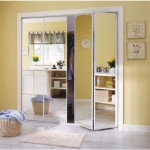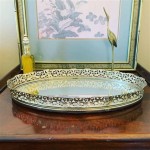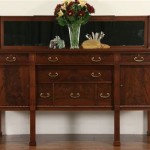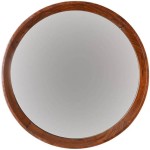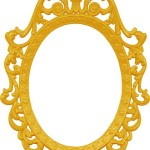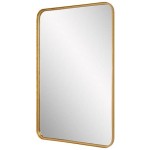How to Mount a Frameless Mirror on the Wall
Mounting a frameless mirror presents a sleek, modern look, but requires careful planning and execution for a secure and aesthetically pleasing result. This guide outlines the necessary steps and considerations for successfully mounting a frameless mirror on the wall.
Assessing the Mirror and Wall
The initial stage involves evaluating both the mirror and the wall where it will be mounted. This assessment is crucial for determining appropriate mounting hardware and methods.
- Mirror Weight and Dimensions: Accurately measure the mirror's height, width, and thickness. Obtain the exact weight, which is essential for selecting appropriate adhesives or mechanical fasteners.
- Wall Type: Identify the wall material (drywall, plaster, concrete, etc.). Different wall types require different mounting techniques and hardware.
- Stud Location: Locating studs using a stud finder is recommended, particularly for heavier mirrors. Mounting directly to studs provides the most secure installation.
- Wiring and Plumbing: Before drilling or nailing, check for electrical wiring and plumbing within the wall using a stud finder with AC wire detection capabilities.
Choosing the Right Mounting Method
Several methods are available for mounting frameless mirrors, each with its advantages and disadvantages. Selecting the appropriate method depends on the factors assessed in the previous step.
- Mirror Adhesive: Specialized mirror adhesives offer a strong bond and are suitable for lighter mirrors on smooth, even walls. Ensure the adhesive is compatible with both the mirror backing and the wall material.
- J-Channels/Z-Clips: These mechanical fasteners provide a hidden mounting system. J-channels are installed on the wall, while Z-clips are attached to the mirror, allowing the mirror to slide into the channels. This method offers good support and adjustability.
- Mirror Clips: Mirror clips are visible fasteners that grip the edges of the mirror. They are straightforward to install and suitable for lighter mirrors. Various styles and finishes are available to complement the mirror's aesthetic.
- Combination of Adhesive and Clips: For added security, especially with larger or heavier mirrors, a combination of adhesive and clips (J-channels, Z-clips, or mirror clips) can be employed. This offers superior support and prevents movement.
- French Cleats: These interlocking wooden brackets are a robust option for heavier mirrors. One part is attached to the wall, and the other to the back of the mirror. They provide exceptional stability and weight distribution.
Preparing the Wall and Mirror
Proper preparation is essential for a successful installation. This involves ensuring both the wall and the mirror are ready for mounting.
- Cleaning the Wall: Clean the wall surface with a damp cloth and allow it to dry completely. This removes dust and debris that can compromise adhesion.
- Marking the Mirror Placement: Carefully measure and mark the desired mirror location on the wall using a level and pencil. Use masking tape to create an outline of the mirror for accurate positioning.
- Preparing the Mirror Backing: Ensure the back of the mirror is clean and free of any residue. Some mirror adhesives require a specific surface preparation, so consult the adhesive manufacturer’s instructions.
Mounting the Mirror
With the preparatory steps completed, the mirror can now be mounted. Follow the specific instructions provided with the chosen mounting hardware for optimal results. General best practices are outlined below.
- Applying Adhesive: If using adhesive, apply it in a consistent pattern as directed by the manufacturer. Avoid applying adhesive too close to the edges to prevent squeeze-out.
- Installing Clips or Channels: When using clips or channels, ensure they are securely fastened to the wall, preferably into studs. Use appropriate anchors for walls without studs behind the mirror.
- Positioning the Mirror: Carefully lift and position the mirror onto the installed hardware or adhesive. Use shims if necessary to create even spacing and level the mirror.
Finishing Touches
After the mirror is securely mounted, a few final steps ensure a professional finish and long-term stability.
- Cleaning: Gently clean the mirror surface with a glass cleaner to remove any fingerprints or smudges.
- Sealant (Optional): Applying a thin bead of neutral-cure silicone sealant along the edges where the mirror meets the wall can create a waterproof barrier and provide extra security.
By following these steps and adhering to the manufacturer’s instructions for specific mounting hardware, one can successfully and safely mount a frameless mirror, adding a touch of modern elegance to any space.

How To Hang A Frameless Mirror On Wall E Architect

3 Simple Ways To Hang A Mirror On Wall Without Nails Wikihow

Wall Mounted Adjustable Frameless Mirror Beveled Glass Edges Tilt Feature Metal Mount Design China Silver Made In Com

How To Remove A Mirror Glued The Wall Forbes Home

5 Alternatives For Hanging Art Without Frames Diy Poster Frame Display
Options For Hanging Frame Mirror In Bathrooom The Picture Framers Grumble

Mirror Without Frame Bgaframes Eu

Wooden Mirror Frame For Wall Decoration Bedroom Antique Full Length Table 6x3 Feet Mount Mango Wood White Distress Without A M

Wooden Mirror Frame For Wall Decoration Bedroom Mount Mango Wood Antique Gold Finish Without

Neutype 71 X32 Aluminum Alloy Wall Mount Rounded Corner Rectangular Mirror Gold No Stand Com

